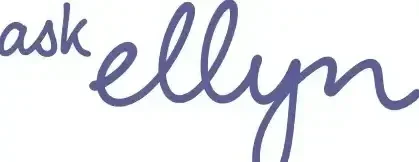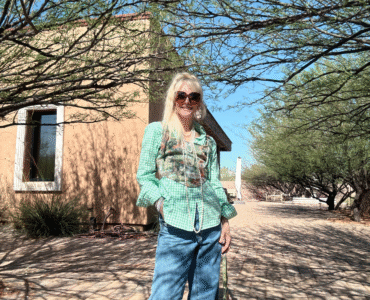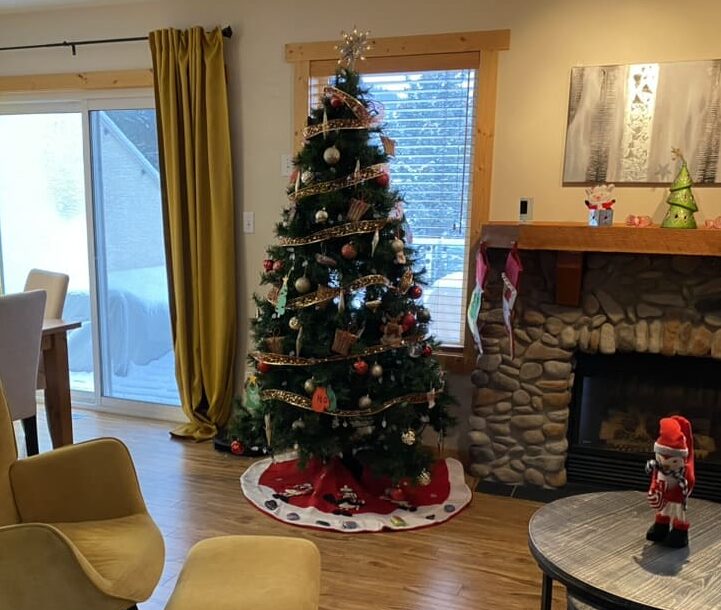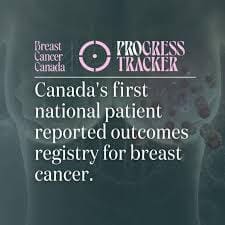Why would someone opt to remain flat after mastectomy? When most people think of breast cancer survivorship, they picture women triumphantly “beating” the disease and then undergoing reconstructive surgery to regain what was lost. But for a growing number of women, including Canadian advocate and author Ellyn Winters-Robinson, the choice to remain flat after mastectomy is not a last resort — it’s an act of power, clarity, and self-definition.
From personal blogs to national news features, Ellyn’s story and the broader flat movement are helping dismantle shame and reshape the conversation about what it means to heal, be whole, and live proudly in a body transformed by cancer.
“Flat, Please. Hold the Shame.”
That bold title of Ellyn’s memoir — Flat, Please. Hold the Shame — captures the essence of a movement that’s long overdue. After her double mastectomy, Ellyn made the conscious decision to forgo reconstruction. Not because she didn’t have options, but because she saw beauty and strength in her body exactly as it was.
Her decision wasn’t immediately embraced. In fact, as she recounts in multiple interviews (from People magazine to The Globe and Mail), she was often met with confusion, pity, or pressure to reconstruct. One physician even described her flat chest as “unfeminine.” That hit her hard. But instead of internalizing the shame, she transformed her decision to go flat after mastectomy into a rallying cry.
Shame is a Social Construct. So is Femininity.
Across media outlets and in her public speaking, Ellyn challenges long-held assumptions: that femininity is tied to breasts, that women must prioritize cosmetic recovery after surviving cancer, and that “looking normal” for a woman means having breasts.
On The Honest Talk and in her Breast Cancer Canada profile, she notes that our culture often conflates “wholeness” with symmetry and beauty. But to her, being whole meant being honest with herself — and showing up in the world as a proud, unapologetic flat woman.
The Medical System Isn’t Always on Board with Flat After Mastectomy
One consistent theme in Ellyn’s story — and those of many other women who choose flat after mastectomy — is the lack of support from the medical community. As many as 25% of women experience flat denial from their doctors. While reconstruction using implants or the DIEP flap procedure — both requiring multiple surgeries — is routinely offered and even encouraged, the flat option is often framed as “doing nothing.” In reality, it’s an active, courageous choice.
In The Globe and Mail and Chatelaine Ellyn writes passionately about the need for flat closure to be treated as a valid outcome, not a failure or an afterthought. She advocates for better informed consent and more respectful conversations between doctors and patients — especially those who don’t want to reconstruct.
Power in Visibility
Despite the societal discomfort with flatness, Ellyn made a decision early in her recovery: she would not hide.
In an inspiring CTV News feature and People magazine article, she shared how she took her first post-mastectomy photos wearing a bright pink suit, flat-chested and beaming with confidence. Her photoshoot wasn’t about bravery or rebellion — it was about normalizing what cancer really looks like.
Since then, Ellyn has become a beacon for other survivors who want to know they’re not alone. She frequently receives messages from women thanking her for giving them permission to embrace their bodies as-is.
The Flat Movement Is Growing
While Ellyn’s story is personal, it taps into a larger cultural shift. More women are rejecting the idea that reconstruction is necessary to “feel like themselves again.” Instead, they are redefining womanhood, femininity, and sexuality on their own terms.
Social platforms, community groups, and media outlets are amplifying these stories. And each time a flat woman is seen — not hidden, not pitied — another crack forms in the rigid mold society tries to cast for survivors.
More Than Surviving — Thriving
Ellyn’s message isn’t just about going flat. It’s about owning your story, however it unfolds. It’s about rejecting shame, choosing authenticity, and understanding that survivorship looks different for everyone.
Her work — including her book, public speaking, and her AI-powered cancer support tool, AskEllyn — centers on storytelling as a healing force. And her body, flat and proud, is part of that story.
“I didn’t lose my femininity,” she says. “I redefined it.”
Want to Learn More?
📘 Flat, Please. Hold the Shame is available on Amazon
🗣 Read more of Ellyn’s story on Susan G. Komen and The Globe and Mail
📺 Watch her interview on CTV News
📸 Follow the ongoing conversation at The Honest Talk and People Magazine




